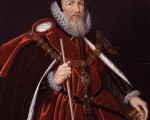
On this day in history events for 7 – 13 September.
[Read More...]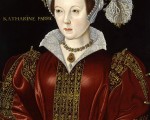
Catherine was born in 1512, most likely in London or Buckinghamshire. Her parents were Sir Thomas Parr, a favourite of King Henry VIII during his early reign, and Maud Parr, who served as a lady-in-waiting to Henry VIII’s first wife Katherine of Aragon. It is believed that Catherine was named after the Queen. Catherine had a younger brother named William, born in 1513 and a younger sister named Anne born in 1515.
[Read More...]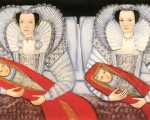
Childbirth is openly discussed in today’s society. Images of pregnant women appear in magazines and women giving birth can be seen on television and in movies. Yet during the medieval period, childbirth was deemed a private affair. Giving birth in the middle ages was a dangerous time for women and childbirth did not discriminate. Young mothers, older mothers, poor or rich mothers, all could die not only in childbirth but also due to complications afterwards. Sadly, more than one in three women died during their child-bearing years.
[Read More...]
Historian Gareth Russell is the editor of our monthly Tudor Life magazine and he’s been working hard on scheduling expert articles and also expert talks for the next few months. We are thrilled to bits that so many historians and authors want to be involved in the Tudor Society by offering their knowledge and expertise to our members – a big thank you to them and to all our members too for your continued support.
Contributors to Tudor Life magazine in the coming months include:
[Read More...]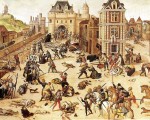
On this day in 1572, the St Bartholomew’s Day Massacre took place. An estimated 3,000 French Protestants (Huguenots) were massacred in Paris, and a further estimated 7,000 in the provinces. According to tradition, Catherine de’ Medici persuaded her son, King Charles IX of France, to order the assassination of key Huguenot leaders who had gathered in Paris for the wedding of their leader, Henry of Navarre, to Margaret of Valois, the King’s sister.
[Read More...]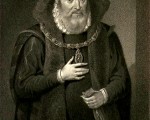
On 23rd August 1548, Francis Talbot, 5th Earl of Shrewsbury, arrived at the Siege of Haddington, in East Lothian, Scotland, with a large army.
The siege was actually part of a series of sieges at Haddington, which were all part of the Anglo-Scottish war known as the War of the Rough Wooing, so named because it was had been started in 1543 by Henry VIII in a bid to secure a marriage agreement between England and Scotland, between Prince Edward and Mary, Queen of Scots.
[Read More...]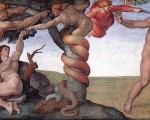
While in today’s modern times many people are more open with their knowledge and acceptance of sexual intercourse, during the Tudor period things were very different.
The church played a major role in sex and the duties of the female body. The Virgin Mary and Eve, the mother of mankind, helped to develop people’s views of sexual intercourse, birth and the formation and function of the female body. Messages were conveyed not only through sermons but also through images and paintings. The act of intercourse, was tainted by the fall of Eve. Women were seen as inferior versions of men and were thought to be greatly susceptible to the devil and the dark forces. The Church taught that women’s bodies ran hot and thus they always desired sex and acts of fornication. Thus marriage and sex within marriage was the only way to control a woman’s desires. Sex was strictly confined to marriage and only for the purpose of reproduction.
[Read More...]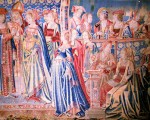
Marriage during the Tudor period was very different to how it is today. First and foremost marriage was considered to be between a man and a woman, and there was no room for anything else. There was also no need for a marriage certificate or legal process as there is today. Instead the Church’s law dictated that all that made a legal marriage was the consent of two people.
[Read More...]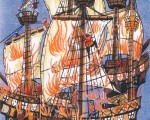
On the 10th August 1512, the Battle of Saint-Mathieu, a battle in the War of the League of Cambrai, took place between the English and Franco-Breton fleets off the coast of Brest. England at this time were allied with Spain and the Holy Roman Empire against France.
[Read More...]
Louis XI chose Amboise as the royal residence of his consort, Charlotte of Savoy, and their son,the dauphin (future Charles VIII), was born at the château in 1470. It soon became a favourite royal residence and was one of the homes of The French court from Louis XI to Francis I.
[Read More...]
The Battle of Woodbury Common, part of the Prayer Book Rebellion, took place on 4th August 1549 on Woodbury Common, near the village of Woodbury in East Devon. The battle took place at 4am and happened when the rebels, who had been defending Clyst St Mary, marched to Woodbury Mill where Lord Russell and his troops had camped for the night. The rebels were defeated.
[Read More...]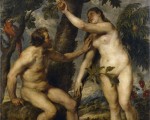
It has been happening to women since the dawn of time and yet during the Tudor age it was rarely spoken about. The monthly curse, flowering, coming of age, a period, a woman’s menstruation goes by many names yet how did women during the Tudor age handle their cycles without the modern day use of sanitary napkins or in some cases pain killers? (And lots of chocolate!)
[Read More...]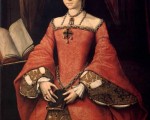
On 31st July 1548, the fourteen year-old Elizabeth, future Elizabeth I, wrote to her stepmother Catherine Parr, the Dowager Queen. The letter was written just before the pregnant Catherine took to her chamber, and just weeks before Catherine died of puerperal (childbed) fever. Elizabeth wrote:
[Read More...]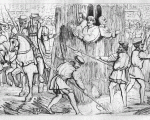
On this day in history, Catholics Thomas Abell, Edward Powell and Richard Fetherston were hanged, drawn and quartered at Smithfield for refusing to acknowledge the royal supremacy. Also, at Smithfield that day, religious reformers Robert Barnes, William Jerome and Thomas Garrard were burned at the stake for heresy. Reformers and Catholics being executed on the same day – I wonder what the common people made of that!
[Read More...]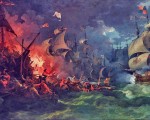
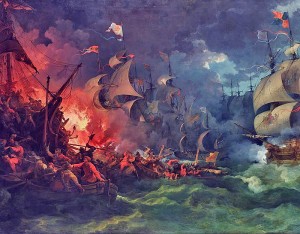
Defeat of the Spanish Armada at Gravelines, Philipp Jakob Loutherbourg the Younger.
The English had learned from previous encounters with the Spanish fleet and so used new and more successful tactics. They had learned from capturing the Rosario in the Channel that the Spaniards could not easily reload their guns, so with their smaller and lighter ships the English were able to provoke the Spaniards into firing, but keep out of range and then close in for the kill.
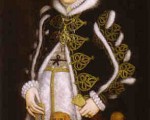
In my last article, Unravelling Mary Boleyn, I wrote about Catherine and Henry Carey, the children of Mary Boleyn. There have always been questions surrounding the paternity of Mary Boleyn’s children as around the time that both children were conceived Mary Boleyn was not only a married woman but she was also the mistress of Henry VIII.
[Read More...]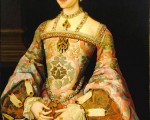
We tend to think of her as the woman who comes from nowhere, she’s not. In many ways she’s the most interesting, the most exciting, the best educated, and the cleverest of Henry’s wives. -David Starkey
Katherine Parr has been remembered through history as King Henry VIII’s sixth and final wife. The fortunate wife that survived. She has been labelled as merely Henry’s nurse, tending to the sickly king’s infirmities. Essentially, she is believed to be little more than Henry’s companion in his final years, with no great achievements of her own. She is often viewed as a wife of lesser importance, in contrast to the hugely popular Anne Boleyn whose legacy has been carried through centuries of intrigue and fame. This article intends to demystify the myths associated with Katherine Parr’s turbulent life, thus to reveal a more realistic view of a women who was well read, deeply religious and ultimately important during her time.
[Read More...]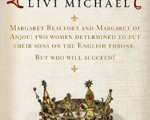
Author Livi Michael is one of our August speakers (yes, we’ve got 2!) and I just wanted to let you know that the second of her “Wars of the Roses” novels, Rebellion, is due out in the UK on 13th August as a paperback and kindle. It is also coming out on kindle on that date in the US.
[Read More...]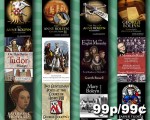
Following on from last week’s special on historical fiction books, MadeGlobal Publishing’s non-fiction history books are kindle countdown deals today and tomorrow (21 and 22 July) at 99c/99p each on Amazon.com and Amazon UK.
[Read More...]I appreciate the savings of an annual membership - my husband's birthday present to his favorite Virgo! The site looks good, lots of room for growth potential and I love having access to all those primary sources. Claire and Tim, your hard work shows. Congrats!
I appreciate the savings of an annual membership - my husband's birthday present to his favorite Virgo! The site looks good, lots of room for growth potential and I love having access to all those primary sources. Claire and Tim, your hard work shows. Congrats!
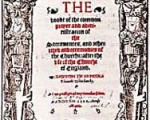
Thank you to Beth von Staats for joining us here on the Tudor Society today as part of her book tour for Thomas Cranmer: In a Nutshell. She is here to share an excellent article on Thomas Cranmer and the Book of Common Prayer – thanks Beth!
MadeGlobal Publishing is offering one copy of the paperback version of Thomas Cranmer: In a Nutshell as a prize for one lucky commenter. All you have to do to enter the giveaway is to comment below saying what you find so fascinating about Thomas Cranmer. You need to leave your comment by midnight (UK time) on Wednesday 15th July. The winner will be picked at random and contacted for his/her postal address. The giveaway is open internationally.
[Read More...]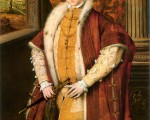
Between 8 and 9pm on 6th July 1553 King Edward VI lay dying at Greenwich Palace. He prayed:
“Lord God, deliver me out of this miserable and wretched life, and take me among thy chosen: howbeit not my will, but thy will be done. Lord I commit my spirit to thee. O Lord! Thou knowest how happy it were for me to be with thee: yet, for thy chosen’s sake, send me life and health, that I may truly serve thee. O my Lord God, bless thy people, and save thine inheritance! O Lord God save thy chosen people of England! O my Lord God. defend this realm from papistry, and maintain thy true religion; that I and my people may praise thy holy name, for thy Son Jesus Christ’s sake!”
[Read More...]
In this week’s Claire Chats I talk about how to go about researching Tudor history. I’m sharing a slideshow and talk I did back in 2013 and I do hope it’s useful to those of you who are new to researching history.
[Read More...]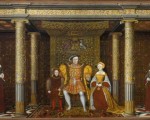
London is sweltering in unaccustomed heat, so if you are in England you might consider a visit to the Queen’s gallery, Buckingham Palace just to get out of the sun.
The exhibition is full of beautiful paintings, china and exquisite Fabergé flowers and importantly for members of The Tudor Society, this painting by the prolific artist, British School.
[Read More...]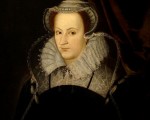
On 20th June 1567, a few days after Scottish rebels apprehended Mary, Queen of Scots, servants of James Douglas, 4th Earl of Morton, allegedly found a silver casket of eight letters, two marriage contracts (which apparently proved that Mary had agreed to marry Bothwell before his divorce) and twelve sonnets. The casket was found in the possession of James Hepburn, 4th Earl of Bothwell and third husband of Mary, Queen of Scots.
[Read More...]
Lacey Baldwin Smith has written that “Tudor portraits bear about as much resemblance to their subjects as elephants to prunes.” A slight exaggeration, maybe. But it is true that the historical accuracy of the depictions in Tudor portraits, particularly of royalty, was often at war with “symbolic iconizing”—the use of imagery to represent the person’s character, position or role.
The symbolism could include inscriptions, emblems, mottos, relationships with other people, animals, or objects, and it could also be written into the body itself. A famous example is Hans Holbein’s sketch of Henry VIII—the painting itself was destroyed in a fire—with the king posed to emphasize his power, authority, and resoluteness: legs spread and firmly planted, broad shoulders, one hand on his dagger, and a very visible codpiece (larger, art historians have noted, than portraits of other men at the time.) His stance, as Suzanne Lipscomb points out, “mimics the stance of a man standing in full armour…sparking associations with martial glory.” Lipscomb also points out an interesting detail: in the draft sketch, Henry’s face is turned to a ¾ angle. But in the final painting, as we know from 16th century copies done within Henry’s lifetime, Holbein has Henry looking straight ahead, confronting the spectator with an unblinking stare that is still symbolic of masculinity today.
[Read More...]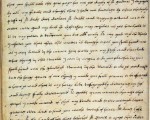
I just wanted to share with you some resources from the National Archives for those of you using primary sources for your research. Reading and interpreting old documents can be a challenge in many different ways, so here are some resources you should find useful.
[Read More...]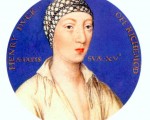
Henry Fitzroy was the illegitimate child of Henry VIII, the second Tudor monarch, with his mistress Elizabeth Blount. In 1512, when Henry VIII was approximately twenty-one years of age a beautiful young woman came to court. Her name was Elizabeth “Bessie” Blount and at that time she had no idea the future that lay ahead of her. While the Blounts were not members of nobility, they were members of the gentry who through opportunity, connections and talent had earned a place at court. It is believed that it was William Blount, Lord Mountjoy, Queen Katherine of Aragon’s chamberlain, who acquired a place at court for Elizabeth Blount. Sometime between 1513 – 1514, Bessie became a maid of honour to the Queen. As a maid of honour, Bessie would have had to have been beautiful and well-mannered, with all the accomplishments suitable for a young lady of the time. She’d need to be able to play a musical instrument, to sing and dance, to sew and embroider, to know her place and, most importantly, be devout to the Catholic faith. It is reported that Bessie was a very talented singer and dancer, and it may have been these talents which attracted the young Henry VIII.
[Read More...]